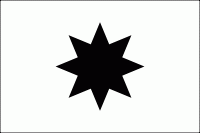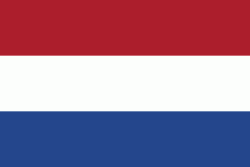Alphen aan den Rijn (Alphen aan den Rijn)
 |
 |
The municipality of Alphen aan den Rijn also includes the communities of Aarlanderveen, Zwammerdam, and Boskoop. The city is located in what is called the 'Green Heart' of the Netherlands, which is a somewhat less densely populated centre area of the Randstad.
The name "Alphen" is probably derived from the name of the Roman fort Albaniana, meaning "settlement at the white water". Its remains still lie underneath the city centre.
The area around Alphen aan den Rijn has been inhabited for 2000 years. In the Roman era, the Oude Rijn was the main branch of the Rhine River and formed the north border of the Roman Empire. Since the rule of Emperor Claudius (41–54 AD), divisions of the Roman army were stationed here. Consequently, several Roman fortifications were located along the Oude Rijn, including castellum Albanianae in the centre of Alphen. The Romans had also built the first bridge over the Oude Rijn. Alphen was therefore an important commercial site in the area until Germanic raids ended that in 240 AD.
After recurring problems with flooding, especially in Utrecht and Leiden, the Oude Rijn was dammed at Wijk bij Duurstede in 1122, thereby making the Lek River the main branch of the Rhine. The Oude Rijn has not flooded since. During the Middle Ages, Alphen was a fiefdom called Alphen en Rietveld.
In the 17th century, Alphen became prominent again as a hub for commerce. The Oude Rijn was used for boat traffic; there are still portions along the river where the towpath is present.
The current municipality was formed in 1918 through the amalgamation of the smaller municipalities of Alphen, Aarlanderveen, and Oudshoorn. In 1964, the municipality of Zwammerdam was added as well. In 2014 the municipalities of Boskoop and Rijnwoude were amalgamated as well, doubling the land area and increasing the population to over 100,000.
During the Second World War, the majority of Jews from Alphen were deported and subsequently murdered; only a few survived. After the war, the Jewish congregation was disbanded and merged with the one in Leiden. A Jewish cemetery on the Aarkade was founded in 1802, but it was abandoned and razed in the 1960s, with the remains re-interred in Katwijk; in 2012, after fifteen years of community activism by local historian Anke Bakker and CDA council member Alice Besseling, a monument was installed and the area turned into a city park.
Since the 1950s, the city began to grow rapidly. A large new neighbourhood was built on the north side and Alphen became mostly a commuter city. Other urban developments however did create local employment. Since the 1990s, a similar new development was built at the city's south side.
In recent years, a large part of the city centre has undergone a full urban renewal. Many buildings from the 1950s and earlier have been demolished to make place for modern architecture. This "masterplan" included the addition of a new public square next to the riverbank, the construction of a performing arts theatre/cinema, an upgrade of local shops and the creation of pedestrian streets. As of 2006, all of these projects on the left riverbank Hoge Zijde have been finished and a new similar masterplan for the right riverbank Lage Zijde has been developed and is being executed now.
Map - Alphen aan den Rijn (Alphen aan den Rijn)
Map
Country - Netherlands
 |
 |
The four largest cities in the Netherlands are Amsterdam, Rotterdam, The Hague and Utrecht. Amsterdam is the country's most populous city and the nominal capital. The Hague holds the seat of the States General, Cabinet and Supreme Court. The Port of Rotterdam is the busiest seaport in Europe. Schiphol is the busiest airport in the Netherlands, and the third busiest in Europe. The Netherlands is a founding member of the European Union, Eurozone, G10, NATO, OECD, and WTO, as well as a part of the Schengen Area and the trilateral Benelux Union. It hosts several intergovernmental organisations and international courts, many of which are centred in The Hague.
Currency / Language
| ISO | Currency | Symbol | Significant figures |
|---|---|---|---|
| EUR | Euro | € | 2 |
| ISO | Language |
|---|---|
| NL | Dutch language |
| FY | West Frisian language |















